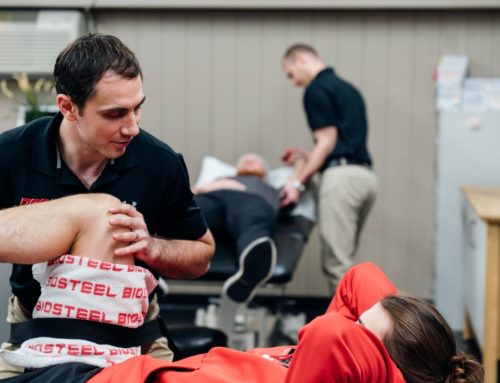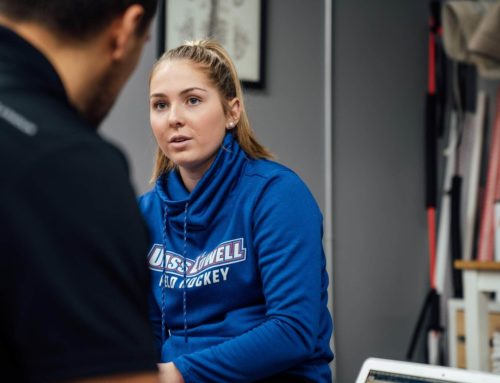OUR NEW NORMAL
Like many resolutioners and New Years goal setters, we entered 2020 with a similar mindset: “This IS going to be my year”. We tackled each day with vigor and determination to reach our new goals and grow. If you’re like me, this meant waking up at 5AM to train at 5:30AM and on some days even adding a second workout or development session. WE WERE CRUSHING IT!
However, by March, COVID-19 spread to Canada leading to closures to public gathering areas and workplaces, along with event cancellations. Phrases like “Social Distancing” and “#Quarantine” became a part of our vocabularies and daily practices. Life as we knew it, and our goals, were put on pause as we adapted to our “New Normal”.
Social distancing and isolation can imply a drastic change to physical activity and exercise practices. These lifestyle habits are often pursued to counter the negative effects of physical and cognitive diseases including: diabetes, hypertension, respiratory & vascular disease, dementia, PTSD, anxiety and depression (just to name a few). (Jimenez-Pavon et al, 2020) So if we can’t go to the gym or the pool and we are discouraged to go to the park, how are we to continue exercising?
ADAPTING TO OUR NEW NORMAL
One such activity I see people doing is lacing up their sneakers and heading out for a run! When you think about it, it makes perfect sense: it’s inexpensive, can be done anywhere, gets you out of the house and adheres to all guidelines and regulations of social distancing. It’s a great way to keep up with your fitness goals for 2020!
If you’re new to running, you may have some apprehension. You may have heard of novice and even experienced runners dealing with all sorts of injuries, aches, pains and niggles. If that makes you uneasy, NO WORRIES, that’s completely normal. I hope to ease some of this anxiety by providing you with some tips on how to start running with a better chance of staying injury free.
THRIVING IN OUR NEW NORMAL
According to Van der Worp et al, 2015, “training errors” were the largest predictor of sustaining an overuse injury. Notable errors included: running with a high training frequency or distance especially in runners with little to no running experience; rapidly increasing running distance regardless of training frequency and finally, history of previous lower extremity injury.
In summary, “Slow and Steady” reigns supreme and if you had a previous injury, consult a movement specialist (physiotherapist, chiropractor, athletic therapist) to ensure you’re at the starting line in tip top condition and with a winning approach. Remember this is a marathon, NOT a sprint.
So where do we start? We’ll explore this in one simple word, “FITT”:
Frequency (Runs / week):
- 3 x / week – with a rest day in between each run.
- This will give your body time to adapt to the new stimulus and recover from new physical stresses. If you wish, on your rest day, it’s ok to incorporate some strength or mobility training.
Intensity of runs:
- Start with a steady “easy” pace. If you feel you could carry on a conversation this is a great pace for you.
Type of surface:
- No research definitively suggests running on certain types of surfaces reduces the risk of injury. So whether you have gravel, pavement, trails, GO FOR IT!
Time / running session:
- If you’re brand new to running it’s generally recommended to start with 15 minutes.
- If you feel you are unable to continuously run for 15 minutes, THAT’S OK! It’s actually very common to start with a “Run-Walk” program. I recommend breaking up your 15 minute run with several intermittent walks. Once you feel recovered you may unpause your run and continue on. An example of such program can be seen below:
| Week | Walk (Mins) | Run (Mins) | Repetitions | Total Minutes |
| 1 | 1 | 1 | 7 | 14 |
| 2 | 1 | 2 | 5 | 15 |
| 3 | 1 | 3 | 4 | 16 |
| 4 | 1 | 4 | 4 | 20 |
| 5 | 1 | 5 | 4 | 24 |
| 6 | 1 | 6 | 4 | 28 |
| 7 | 1 | 7 | 4 | 32 |
| 8 | 1 | 8 | 4 | 36 |
| 9 | 1 | 9 | 4 | 40 |
| 10 | 1 | 10 | 4 | 44 |
(NHS Guidelines for a Walk-Run Program)
When you feel you are able to reach 15 minutes of cumulative exercise, you can graduate to a program that weans off a Run-Walk program to a program to one with longer bouts of cumulative running. An example of which can be seen below.
| Week | Walk (Mins) | Run (Mins) | Repetitions | Total Minutes |
| 1 | 1’ | 15’ | 3 | 48’ |
| 2 | 1’ | 15’ | 3 | 48’ |
| 3 | 1’ | 20’ | 3 | 63’ |
| 4 | 1’ | 20’ | 3 | 63’ |
| 5 | 1’ | 30’ | 2 | 62’ |
| 6 | 1’ | 30’ | 2 | 62’ |
| 7 | 1’ walk 40’ run 1’ walk. 18’ run | 60’ | ||
| 8 | 1’ walk 45’ run. 1’ walk 13’ run | 60’ | ||
| 9 | 1’ walk 50’ run 1’ walk 8’ run | 60’ | ||
| 10 | 60’ | 1 | 60’ continuous! | |
(NHS Guidelines for a Gradual Running Program)
Whether you’re a beginner, novice or an experienced runner, by following such guidelines you can reduce your risk of injury and continue on into 2020 with confidence that you CAN accomplish your fitness goals. When the world ZIGS, YOU ZAG and THRIVE ON!
References:
Jimenez-Pavon et al., 2020, Progress in Cardiovascular Diseases, Physical exercise as therapy to fight against the mental and physical consequences of COVID-19 quarantine: Special focus on older people
Van der Worp et al., 2015, PLOS ONE, Risk Factors and Sex Differences in Running Injuries
Written by: Andrew Howie, Registered Physiotherapist






